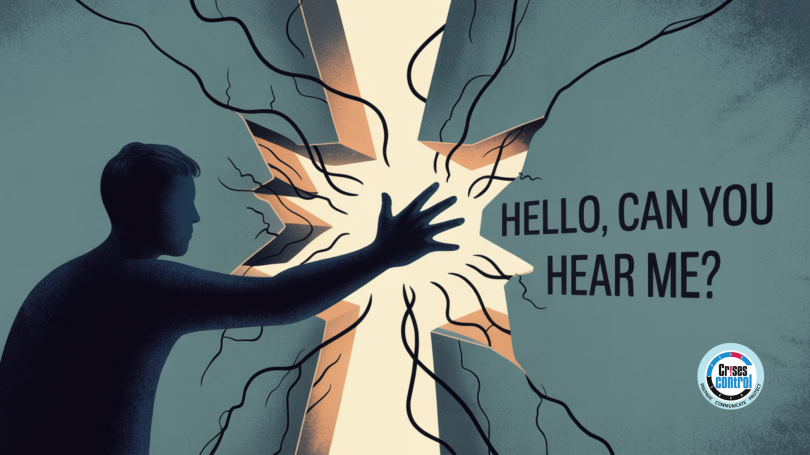One of the key components of a crisis is keeping the lines of communication open for employees, partners, authorities, and even the public. But it’s how you do it that is important. How do you keep clear lines of communication? Who talks to whom? What are the messages going out, and how can you ensure that they are reaching the right people at the right time?
Let’s open the lines of communication now.
Understanding lines of communication
Have you ever given thought to how the more people you have in your organisation, the more conversations it takes for everyone to keep in touch with each other? These are called the lines of communication, and they can quickly get out of hand.
Let’s think it through.
If you have three people, that’s three lines of communication.
- Person A <-> Person B
- Person B <-> Person C
- Person C <-> Person A
Increase your organisation to five people, and it becomes 10 lines of communication.
- Person A <-> Person B
- Person B <-> Person D
- Person A <-> Person B
- Person B <-> Person D
- Person A <-> Person C
- Person B <-> Person E
- Person A <-> Person D
- Person C <-> Person D
- Person A <-> Person E
- Person C <-> Person E
- Person B <-> Person C
- Person D <-> Person E
Still kind of manageable, right?
But what happens when you get to 10 people (45 lines), 14 people (91 lines), or 100 people (4950 lines)? Don’t worry I won’t plot them out, but as you can see, that is a lot of lines of communication, with a lot of potential to get things mixed up, and for messages and people to get lost.
Lines of communication can quickly get tangled
Disorganised lines of communication within an organisation can result in people being missed out, lines getting tangled, someone receiving the wrong message, or for some other people to receive conflicting messages from different sources.
For example, once upon a time, alerting everyone to an incident may have taken place via a phone tree. Person A calls Person B, Person B calls Person C, and so on. But that takes time, and leaves the message open to that well known phenomenon of “The Telephone Game” whereby every person repeating the message changes one small detail, and the final message bears nothing more than a passing resemblance to the original.
Keeping clear lines of communication can be tough enough on a day to day basis, but crisis communication management requires an entirely different strategy. Maintaining clear lines of communication is a key element of effective crisis communication management. Effective communication during a crisis will ensure that where possible operations can be continued, provide guidance and reassurance to those affected, and safeguard your organisation’s reputation.
Your crisis communication strategy requires prior planning, and consideration of several key points.
How will you communicate during a crisis?
- What communication channels will you use?
- Is there a way to alert key people that this is a critical message?
- Do you have a plan for what happens if the phone networks are down, the office is unusable, or most people are off site (say at night)?
- What is the most effective channel to get hold of multiple people quickly?
- Can you send multiple messages to many people quickly?
- What happens if you need two way communication?
What messages will you send?
- What information should be released to employees, partners, or other stakeholders?
- What are the most important messages they should receive?
How do you ensure the right messages get to the right people?
- Who should receive which messages? Remember different teams may need to receive different messages depending on what their role is in managing the crisis.
- Is there a way to create lists or groups for each message type?
- Can messages be prepared in advance?
How will you get hold of everyone?
- Do you have up to date contact details for every employee/ stakeholder? Remember email, with its inbuilt office directory may not be available, and you may find yourself relying on mobile phones. Make sure you have the correct phone number for every employee.
Who sends out the messages?
- Is there a designated person to send out each (or all) messages? Someone in authority who can manage the message and response from their team.
- Is there a single ‘source of truth’?
- Does everyone know their communications role in a crisis?
- Is someone designated to communicate with the press or the public and ensure that the right messages are released?
- Are other employees aware not to talk to the press, or publish incorrect information on social media?
- Does the person designated to post on social media have access to the accounts, complete with passwords?
Effective communication during a crisis requires careful crisis communication planning
We’ve thrown a lot of questions at you, but these are just some of the questions that will be thrown around DURING a crisis. Thinking about them now will help you keep those lines of communication open, and ensure effective communication during a crisis leading to the best possible outcomes during and after crisis day.
